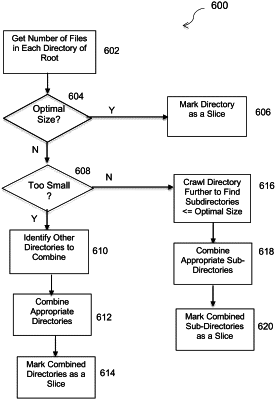| CPC G06F 11/1451 (2013.01) [G06F 16/164 (2019.01); G06F 16/1824 (2019.01); G06F 2201/82 (2013.01)] | 13 Claims |

|
1. A computer-implemented method of managing metadata for backup data in a network attached storage (NAS) fileshare, comprising:
obtaining a change file list (CFL) listing only files that are changed between two different snapshot backups, and obtained by one of an external source providing the CFL or a crawler process crawling the fileshare, to determine changes in files between successive backup operations, wherein the changes in a file comprise at least one of: newly added data, modified data, and deleted data;
creating, by a processor-based backup engine, multiple slices for parallel backup of the files, wherein each slice comprises one or more files of the NAS fileshare;
creating separate backup containers and separate metadata files for each slice;
combining the separate metadata files into a single consolidated metadata file;
defining file details and backup properties in a backup table;
processing, by the processor-based backup engine, a backup query using the consolidated metadata file and backup table;
responding to the backup query through an interface of the backup engine by returning a unique backup ID for each file of the files;
generating the multiple slices by an NAS agent for the backup;
performing an incremental backup using the CFL;
obtaining, by the NAS agent the CFL for the entire fileshare;
using the consolidated metadata file from a last backup to identify the changes in each file to generate storage buckets therefor;
passing the generated storage buckets to a backup engine; and
using the consolidated metadata file again for identifying unchanged files for synthesis from the last backup to get a location of the unchanged files in the previous backup container for synthesizing into a new container.
|